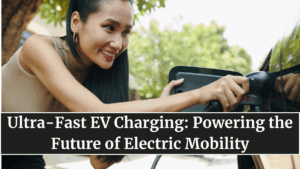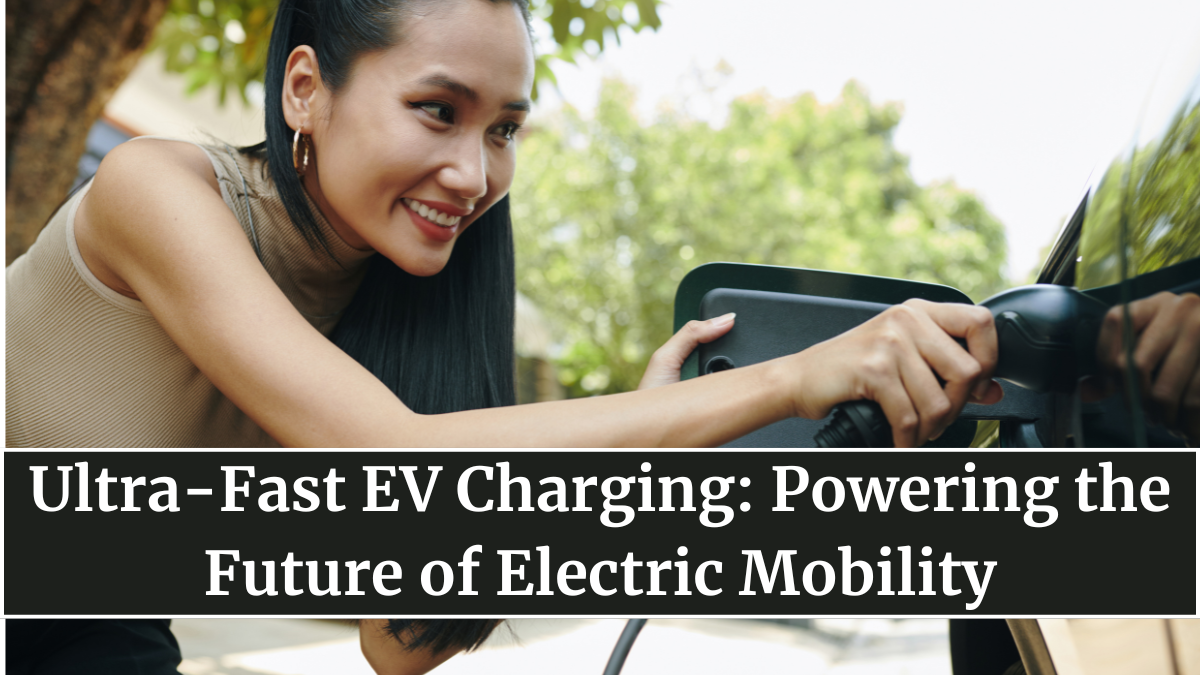The biggest barrier to electric vehicle adoption has always been charging time. Drivers love the idea of clean, quiet, and low-maintenance mobility — but waiting hours to recharge has been a deal-breaker for many. That’s changing rapidly with the rise of EV charging infrastructure ultra-fast tech, which is transforming how, where, and how fast electric vehicles power up.
By 2025, ultra-fast charging is no longer a futuristic concept — it’s becoming the new industry standard, reshaping highways, urban travel, and even fleet logistics.

What Is Ultra-Fast EV Charging?
Ultra-fast charging refers to high-capacity charging stations that deliver power at 150 kW, 350 kW, or even up to 1 MW (megawatt) levels, depending on the vehicle. These chargers can recharge most EVs from 10% to 80% in under 20 minutes — some even faster.
This leap in speed is made possible by advanced liquid-cooled cables, high-voltage battery systems, and intelligent load management that distributes power efficiently without overheating. For long-distance drivers and commercial fleets, this means a quick stop for coffee — not a multi-hour wait.
The Technology Behind the Speed
Ultra-fast charging isn’t just about raw power. It’s a combination of cutting-edge engineering and smart energy management:
-
High-voltage architecture: Most modern EVs now support 800V or even 1000V systems, allowing higher current flow with lower heat.
-
Dynamic power distribution: Charging stations automatically allocate available energy among multiple vehicles.
-
Battery preconditioning: EVs prepare their batteries for high-speed charging by adjusting internal temperature, improving efficiency.
-
Advanced cooling systems: Both chargers and vehicles use liquid cooling to prevent damage at extreme charging speeds.
-
Real-time data optimization: AI systems adjust charging rates based on battery health, ambient temperature, and grid load.
This combination ensures not just speed, but also battery longevity and safety, making ultra-fast charging a sustainable long-term solution.
Global Push for Ultra-Fast Charging Networks
Governments and private players are investing billions in expanding ultra-fast charging corridors across major regions.
| Region | Initiative | Goal Year | Example Providers |
|---|---|---|---|
| USA | National EV Infrastructure (NEVI) Program | 2030 | Electrify America, Tesla Supercharger, EVgo |
| Europe | Trans-European Transport Network (TEN-T) | 2030 | Ionity, Shell Recharge, Fastned |
| India | National Highway EV Corridor | 2028 | Tata Power, Statiq, ChargeZone |
| China | State-backed ultra-fast charging grid | 2026 | NIO Power, State Grid Corp. |
These networks are positioned along highways, urban centers, and logistics hubs — ensuring that long-range EV travel becomes as convenient as refueling petrol cars.
The Impact on Electric Vehicle Adoption
Faster charging times are directly boosting EV adoption. With ultra-fast stations reducing range anxiety, more consumers are confident in switching from ICE (Internal Combustion Engine) vehicles.
Benefits include:
-
Shorter travel downtime for both individual drivers and commercial fleets.
-
Greater convenience — drivers can top up in minutes during short breaks.
-
More viable long-distance trips with reliable, mapped charging points.
-
Enhanced fleet productivity for delivery and logistics operators.
-
Increased grid utilization through smart load management.
As infrastructure scales up, electric mobility is transitioning from early adoption to mass convenience.
Challenges to Overcome
Despite rapid progress, ultra-fast charging comes with hurdles that need addressing:
-
High installation cost: Building a 350 kW station can cost five to ten times more than a standard charger.
-
Grid capacity strain: Sudden high power draws can stress local power networks.
-
Battery degradation risks: Repeated high-voltage charging may affect long-term battery health if not managed properly.
-
Standardization issues: Competing charging standards (CCS, CHAdeMO, NACS) still create compatibility confusion.
The next phase of innovation will focus on standardized connectors, grid integration, and battery chemistry optimization to ensure charging speed doesn’t come at the cost of battery life or grid stability.
The Future of Ultra-Fast Charging
By 2030, ultra-fast chargers will be as common as gas stations. Researchers are developing megawatt-level systems for electric trucks, capable of adding 400 km of range in just 10 minutes. Wireless and solar-integrated chargers are also in testing phases, bringing convenience to city charging and residential hubs.
The ultimate goal: “charge as you stop” — where EVs refuel as seamlessly as ICE vehicles, without the wait. Combined with AI-based grid balancing and renewable integration, ultra-fast charging will define the next decade of sustainable transportation.
The race isn’t just about speed — it’s about reliability, efficiency, and making electric mobility the new normal.
FAQs
What is ultra-fast EV charging?
Ultra-fast charging delivers power at 150 kW or more, allowing EVs to charge up to 80% in 15–20 minutes.
How is ultra-fast charging different from normal charging?
It uses high-voltage systems and liquid cooling to deliver far more power safely, drastically reducing charging time.
Are all EVs compatible with ultra-fast chargers?
Not yet. Only vehicles with 800V or higher systems can use full-speed charging, though most new models now support this.
Does ultra-fast charging damage the battery?
Modern EVs use advanced battery management systems that regulate temperature and voltage, minimizing long-term wear.
What’s the future of ultra-fast charging technology?
The next evolution includes megawatt chargers, AI load management, and standardized global networks that make charging effortless and universal.
Click here to know more.
